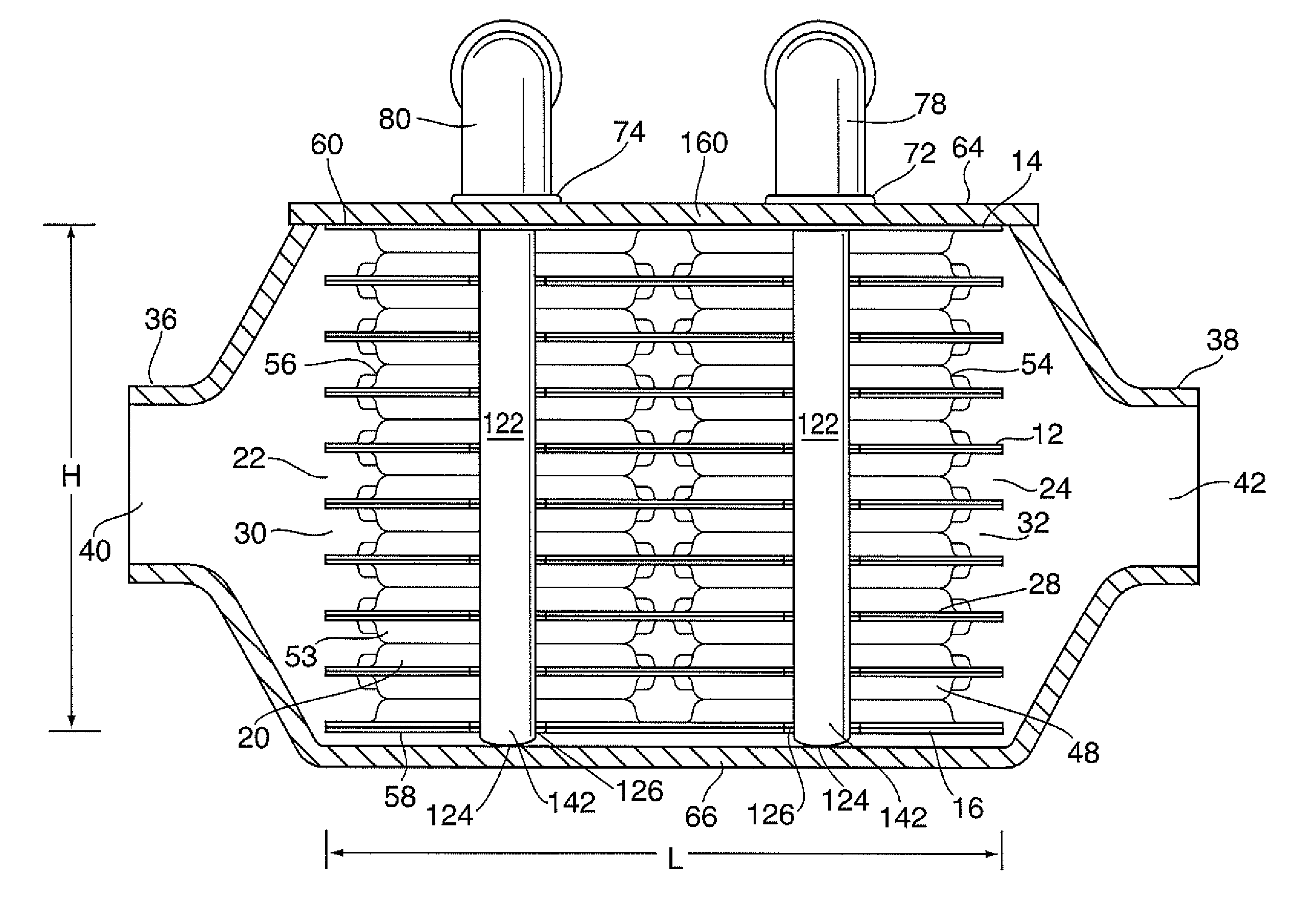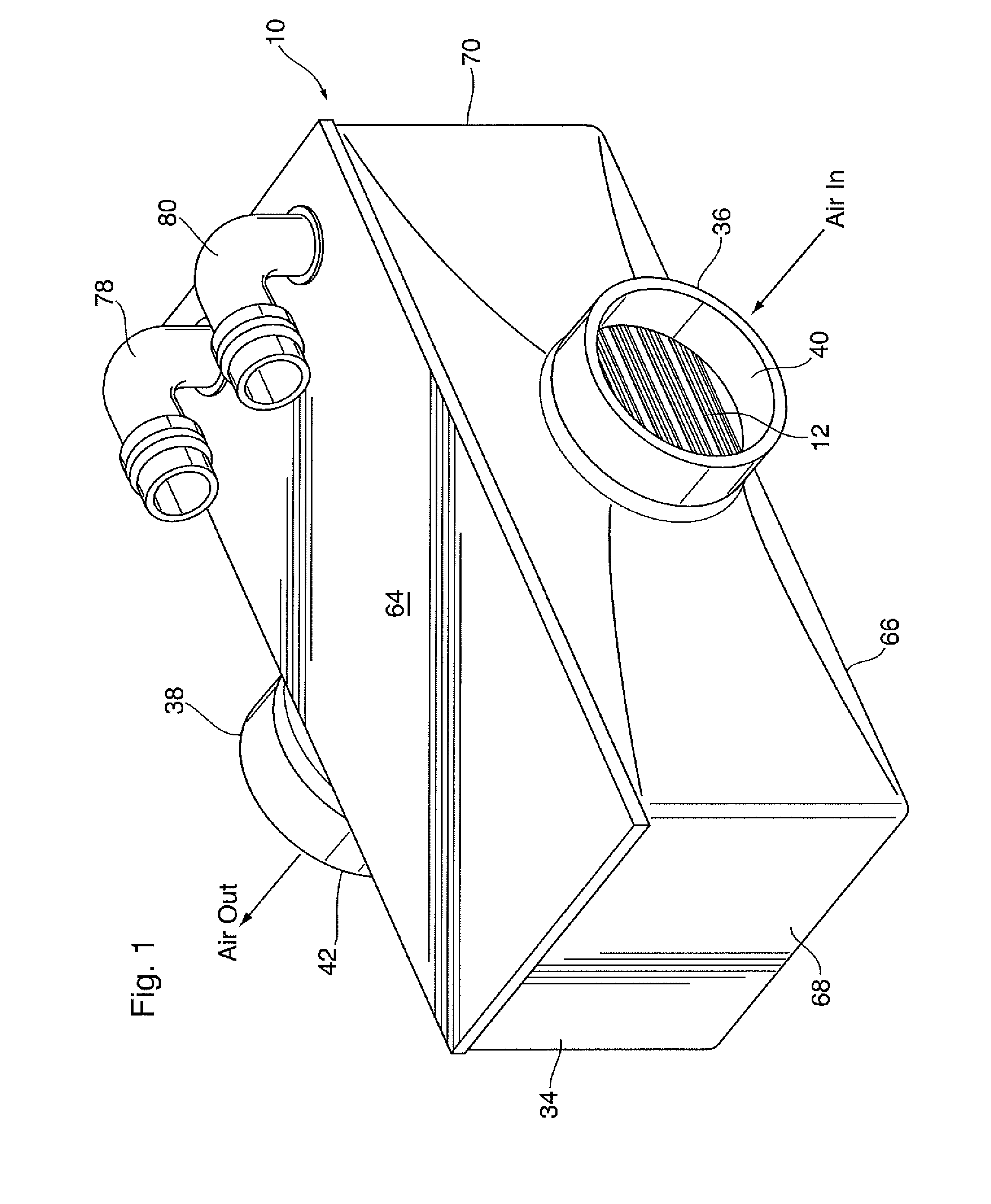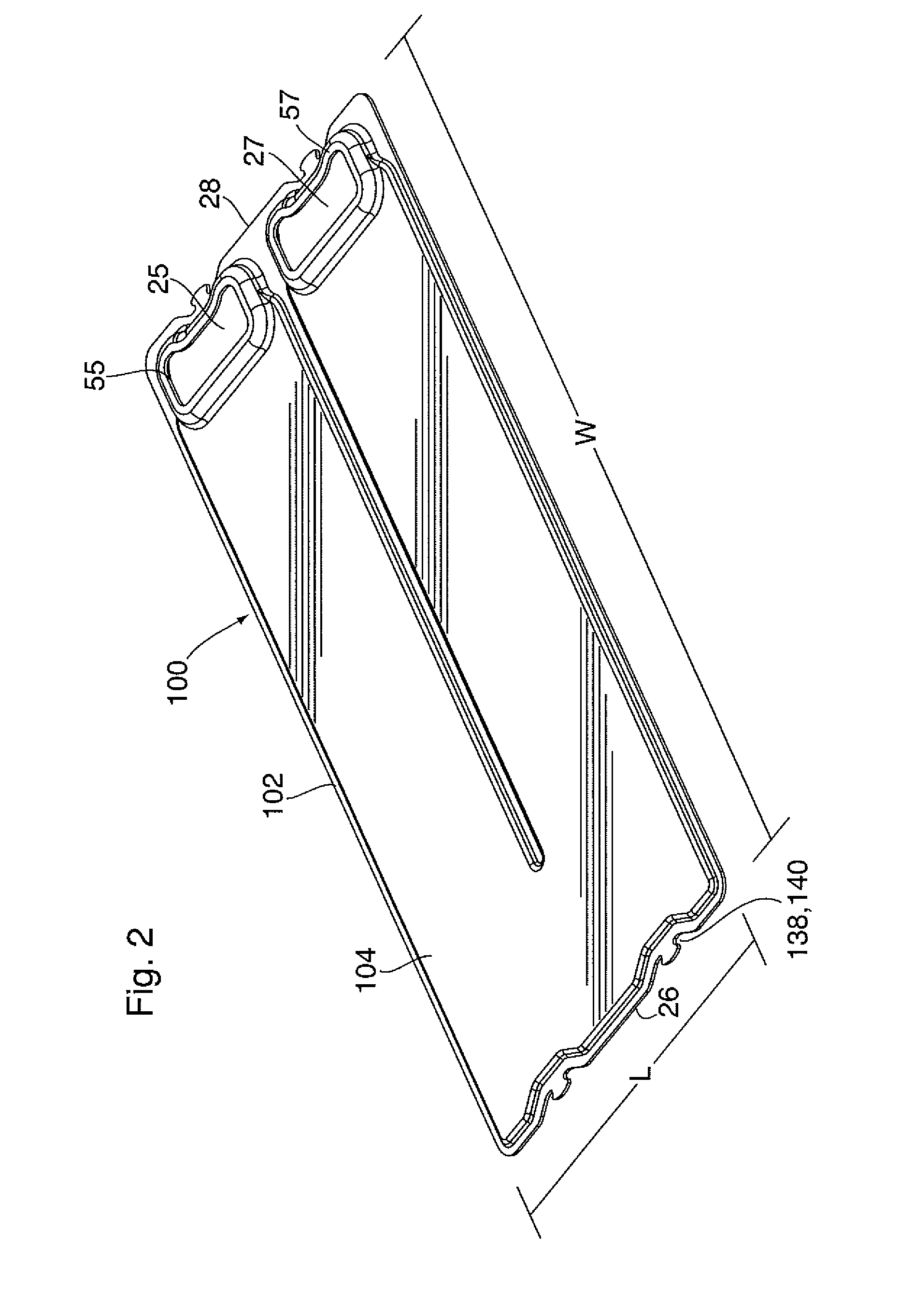Heat Exchanger with Self-Retaining Bypass Seal
a heat exchanger and bypass seal technology, applied in the field of heat exchangers, can solve the problems of reducing the efficiency of the heat exchanger, difficult to provide a bypass seal, and gap between the heat exchanger core and the housing
- Summary
- Abstract
- Description
- Claims
- Application Information
AI Technical Summary
Benefits of technology
Problems solved by technology
Method used
Image
Examples
first embodiment
[0050]A heat exchanger 10 is now described below with reference to FIGS. 1 to 5C.
[0051]Heat exchanger 10 is a charge air cooler for a motor vehicle powered by an engine requiring compressed charge air, such as a turbocharged internal combustion engine or a fuel cell engine. The heat exchanger 10 may be mounted downstream of an air compressor and upstream of an air intake manifold of the engine to cool the hot, compressed charge air before it reaches the engine. However, in some embodiments the heat exchanger 10 may be integrated with the intake manifold, as further discussed below. In the following description, the coolant circulated through the heat exchanger 10 is a liquid coolant which may be the same as the engine coolant, and which may comprise water or a water / glycol mixture.
[0052]It will be appreciated that the specific arrangement and locations of the inlet and outlet openings for air and coolant will at least partially depend on the specific configuration of a vehicle's ai...
second embodiment
[0060]The corrugated fins 62 of the present embodiment are shown as a cross-hatched area in FIG. 5B. However, the corrugated fins of the present embodiment are the same as those of the second embodiment described below, comprising a plurality of parallel sidewalls 44 extending along the length L of core 12, wherein the sidewalls 44 have crests 46 at their tops and bottoms along which they are joined to each other and to adjacent flat tubes 48. The corrugated fins 62 as illustrated in FIGS. 10, 11, 17 and 18 correspond to the corrugated fins 62 of the present embodiment.
[0061]The corrugations defined by the corrugated fin 62 are open at the ends 22, 24 of core 12. Each of the side edges 63, 65 of the corrugated fin 62 is defined by one of the endmost sidewalls 44 of the corrugated fin 62.
[0062]It can be seen from FIG. 5B that one side edge 63 of each corrugated fin 62 is located at, and extends along, the first side 51 of one of the gas flow passages 52. The other side edge 65 of eac...
third embodiment
[0145]A heat exchanger 300 is now described below. Heat exchanger 300 includes a number of elements in common with heat exchangers 10 and 200 described above. These like elements are identified in the drawings and the following description with like reference numerals, and the description of these elements in connection with heat exchangers 10 and / or 200 applies equally to heat exchanger 300.
[0146]Heat exchanger 300 is similar in overall shape to heat exchanger 200 described above, the primary difference being that the inlet and outlet manifolds 54, 56 of heat exchanger 300 are centrally located within the core 12 and aligned along the length L thereof, dividing each gas flow passage 52 into two segments 52a, 52b and also dividing each corrugated fin 62 into two segments 62a, 62b.
[0147]As with heat exchanger 200 described above, heat exchanger 300 includes a housing 34 having a top cover 64 which is integrated with the core 12. The top cover 64 comprises a relatively thick, flat f...
PUM
 Login to View More
Login to View More Abstract
Description
Claims
Application Information
 Login to View More
Login to View More - R&D
- Intellectual Property
- Life Sciences
- Materials
- Tech Scout
- Unparalleled Data Quality
- Higher Quality Content
- 60% Fewer Hallucinations
Browse by: Latest US Patents, China's latest patents, Technical Efficacy Thesaurus, Application Domain, Technology Topic, Popular Technical Reports.
© 2025 PatSnap. All rights reserved.Legal|Privacy policy|Modern Slavery Act Transparency Statement|Sitemap|About US| Contact US: help@patsnap.com



